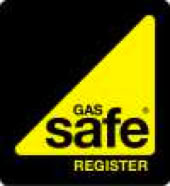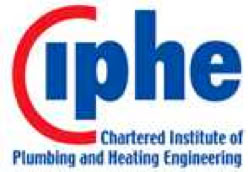
Mike the Boilerman -
Gas Safe Registered boiler and central heating repair technician in west Berkshire

Mike the Boilerman -
Gas Safe Registered boiler and central heating repair technician in west Berkshire
I find myself discussing CO, or carbon monoxide alarms and monitors with customers quite often these days so here are a few of the points that regularly crop up.
The problem:
Carbon monoxide, often abbreviated to “CO” is poisonous, and if breathed in large quantities (or in smaller quantities over extended periods) can kill you. It doesn’t smell of anything so you wouldn’t know it is present, hence the existence of electronic CO detectors, alarms, monitors etc. These are intended to sound an audio warning if they detect dangerous levels of CO in the atmosphere.
Gas boilers ideally would not produce carbon monoxide at all. Most do though, in tiny quantities not normally dangerous, as a result of slightly less than perfect combustion. The flue gasses containing the tiny amounts of CO leave the house safely via the flue or chimney attached to the boiler.
Poor or incomplete combustion within the boiler produces higher, potentially dangerous concentrations of carbon monoxide and these usually also pass out through the flue to outside. However, should there be a fault in the flue or chimney system at the same time, dangerous levels of CO could escape into the house. Hence the importance of the condition of the flue, and the attention paid by gas technicians to the flue when working on a gas appliance, and the development of CO monitors.
CO monitors - where to put them?
Getting a CO monitor for the house is a good idea for obvious reasons. I often find them balanced on top of boilers or in boiler cupboards, but I’m not sure this is a great idea. Far better in my view to have them where people are, where they are sensing the atmosphere the house occupants are breathing, and where it can be easily heard. Also, put them where the manufacturer instructs say, rather than in the boiler cupboard. A monitor in each bedroom always strikes me as a good idea, and in the living room where people spend a lot of time. The kitchen is a less good idea as cookers produce CO too when in use, hence the regulation requiring an opening window where a gas cooker is fitted. Sometimes cookers can cause a CO monitor to start sounding. Maybe this is a good thing! (Cookers however are intended for use under supervision, they do not light themselves automatically like gas boilers so the CO risk is slightly different.)
These suggestions are just my personal opinion, read and follow the manufacturer’s instructions that come with them.
CO alarms sounding:
Most of us gas technicians get called out from time to time by people whose CO alarm has been sounding. Provided there have been no casualties needing medical treatment (or fatalities), we attend and check out the gas appliances for correct operation.
Curiously and so far whenever I have attended a CO alarm sounding, the CO monitor has always been in the kitchen, it has stopped sounding, the boiler has always checked out as operating safely and no CO is present according to my gas analyser. The conclusion is usually that the cooker was the culprit, or the CO monitor itself was/is faulty. My advice is usually to get a second CO monitor and use two side by side in future. One might be faulty but two is highly unlikely. It is possible that CO from outside getting in from say, an idling car engine nearby. Also, I understand CO alarms can also be triggered by other compounds including hydrogen (e.g. from charging a car battery). I’ll look them up later and add them here.
Sometimes people call the gas emergency services when their CO monitor sounds. This may be a good idea but the emergency people’s remit is to ‘make safe’, and they usually do this by capping off the gas supply and advising the gas user to call in a gas technician to carry out safety checks on the appliances and restore the gas supply.
We gas technicians then attend and check out the gas appliances for correct operation and test for high CO in the flue gases, assuming the CO monitor is no longer sounding.
If you like what I write, please Buy me a coffee. Thank you kindly!

Copyright Michael Bryant 2025
Site first published 16th January 2004
Site last updated 13th November 2025
Gas Safe Register 197499, CIPHE registration number 009909L

This website makes use of cookies. Please see my privacy policy for details.